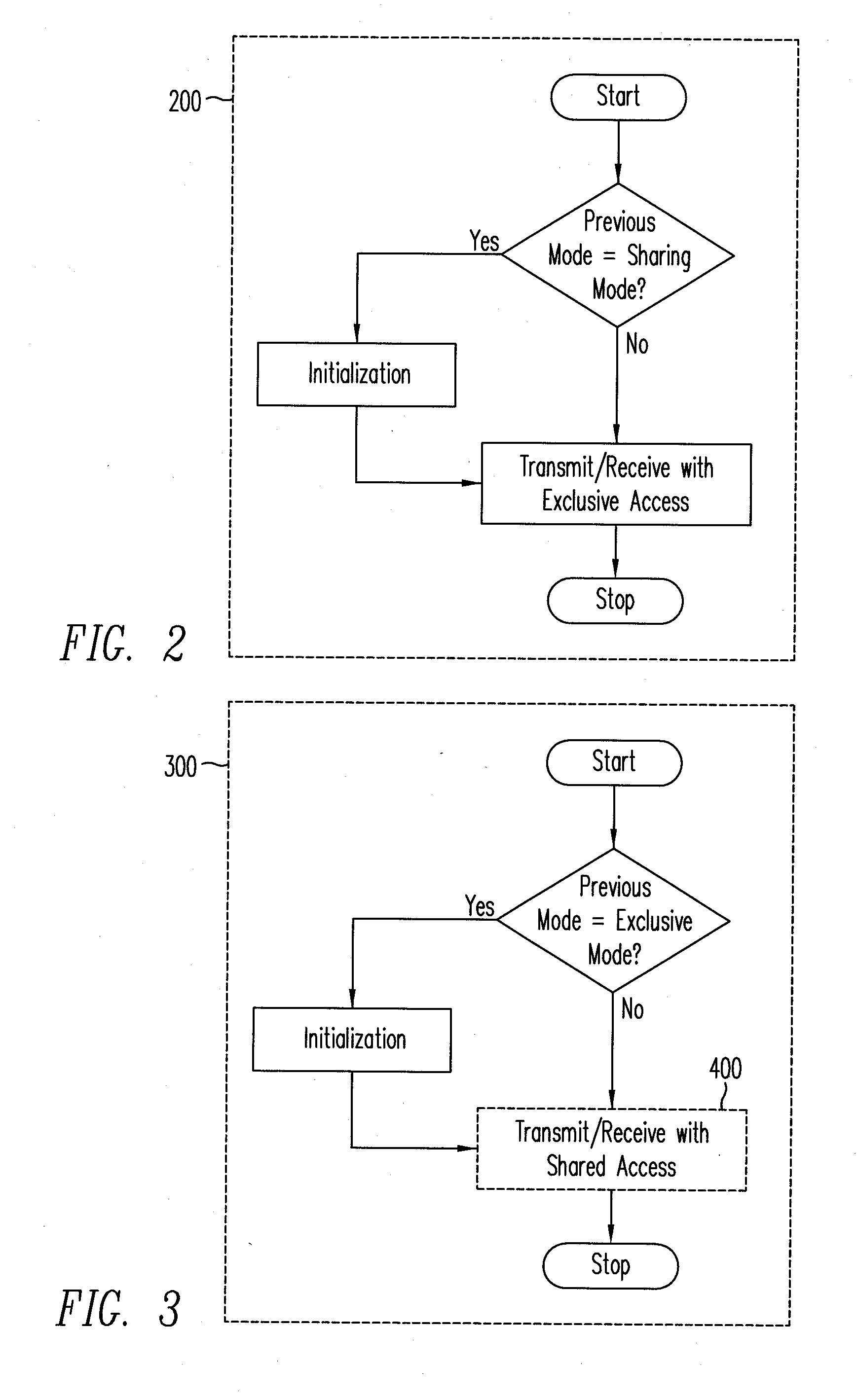Detect-and-multiplex technique for spectrum sharing
a spectrum and multi-layer technology, applied in multiplex communication, digital transmission, electrical equipment, etc., can solve the problems of reducing and reducing the network capacity as less users, so as to reduce contention and increase the efficiency of spectrum usag
- Summary
- Abstract
- Description
- Claims
- Application Information
AI Technical Summary
Benefits of technology
Problems solved by technology
Method used
Image
Examples
Embodiment Construction
[0028]FIG. 1 illustrates a DAM technique according to one embodiment of the present invention. As shown in FIG. 1, the method includes (a) exclusive operating mode 200 and (b) sharing operating mode 300. After spectrum scanning initialization step 102, the interference-plus-noise power level is tested against a predefined threshold 104 to determine which of the operating modes should be used by the wireless system.
[0029]FIG. 2 illustrates in further detail exclusive operation mode 200, in accordance with one embodiment of the present invention. As shown in FIG. 2, when the previous operating mode is sharing operating mode 300, an initialization step is performed. Thereafter, the primary user is granted transmit and receive accesses to the given spectrum channel exclusively. Returning to FIG. 1, at spectrum scanning step 500, the exclusive primary user measures the interference-plus-noise power in its spectral band over a measure period Tm. When the power exceeds the predefined thres...
PUM
 Login to View More
Login to View More Abstract
Description
Claims
Application Information
 Login to View More
Login to View More - R&D
- Intellectual Property
- Life Sciences
- Materials
- Tech Scout
- Unparalleled Data Quality
- Higher Quality Content
- 60% Fewer Hallucinations
Browse by: Latest US Patents, China's latest patents, Technical Efficacy Thesaurus, Application Domain, Technology Topic, Popular Technical Reports.
© 2025 PatSnap. All rights reserved.Legal|Privacy policy|Modern Slavery Act Transparency Statement|Sitemap|About US| Contact US: help@patsnap.com



